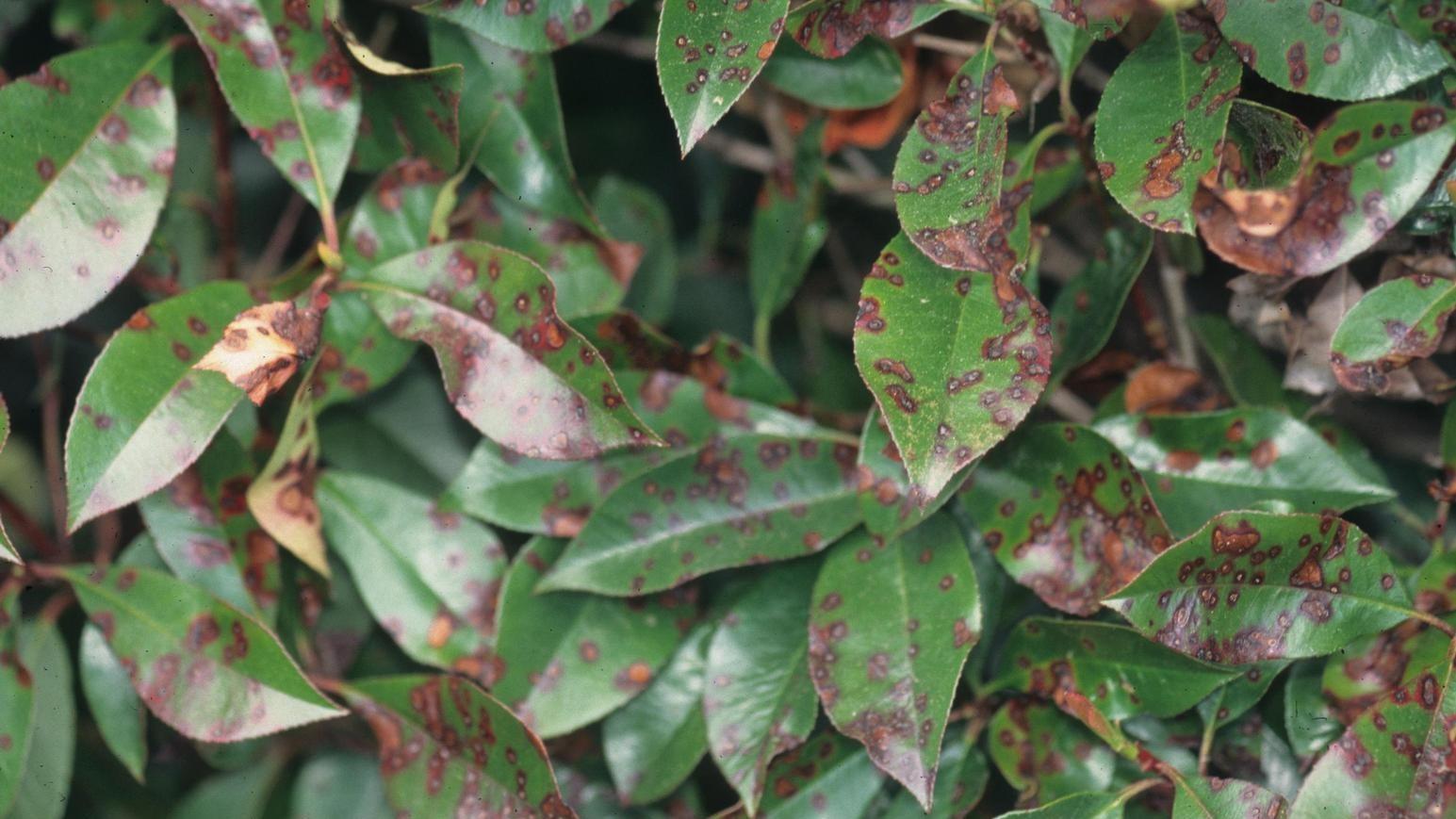Key points
- Entomosporium leaf spot (photinia leaf spot) is one of the most common diseases of photinia (red tip) in the landscape. Other names of this disease include Diplocarpon or Fabrea leaf blight. This is a serious disease.
- This pathogen will also infect more than 60 species of landscape plants in the rose family. Susceptible genera include Amelanchier, Aronia, Chaenomeles, Cotoneaster, Crataegus, Cydonia, Malus, Photinia, Pyracantha, Pyrus, and Sorbus.
- Symptoms begin as small spots that usually coalesce into large dead areas.
- Lesions on plants such as photinia frequently have reddish brown margins with gray centers.
- Infected plants will defoliate before mid summer and secondary infections frequently cause extensive disease on new foliage. Once this fungal disease gets into an established planting, it is difficult to control and tends to take constant management.

Entomosporium leaf spot (Diplocarpon mespili) symptoms. Photo: Ron Jones, North Carolina State University, Bugwood.org
Management
- Sanitation steps such as pruning out symptomatic foliage and removal of leaf debris can help to reduce the amount of fungal spores around the plant that can reinfect new foliage.
- Fungicides will not cure existing symptoms. A copper fungicide could be used on healthy new foliage to prevent infection.
- We don't typically recommend Photinia in our area because this disease and so common. Consider replacing photinia with another type of shrub that is less prone to problems. We have some options listed here: Plants for Mixed Privacy Screens.
Rev. 2020
